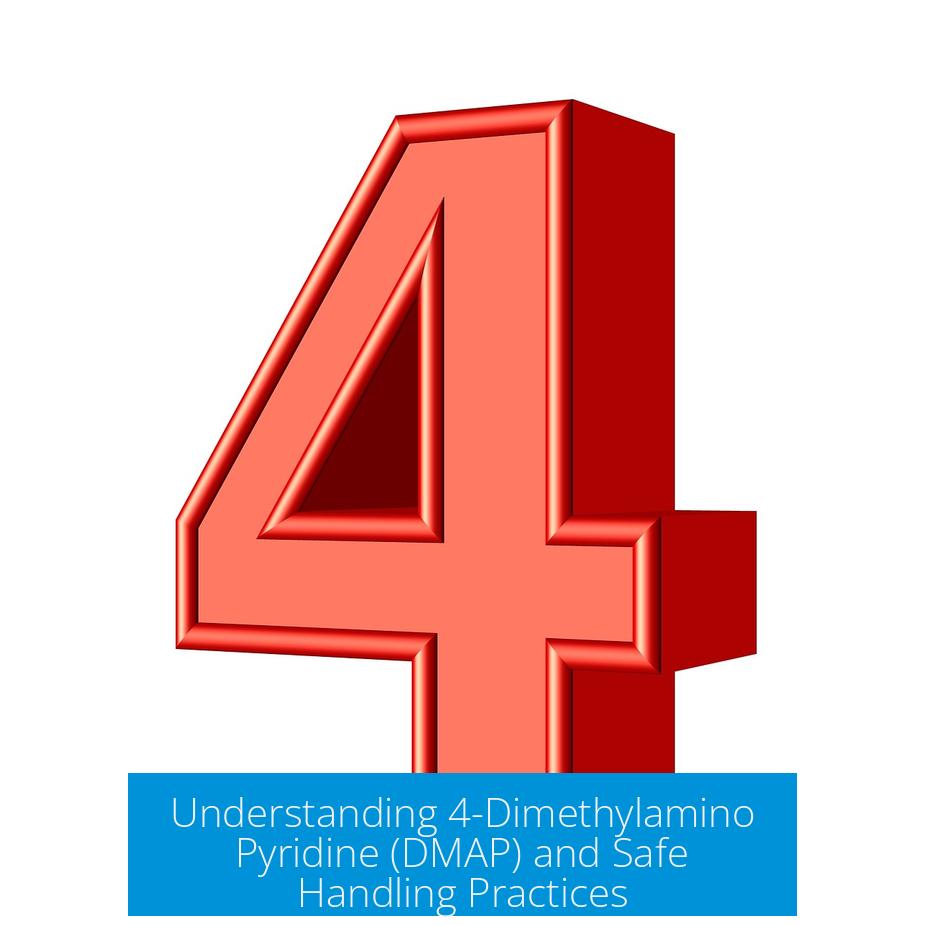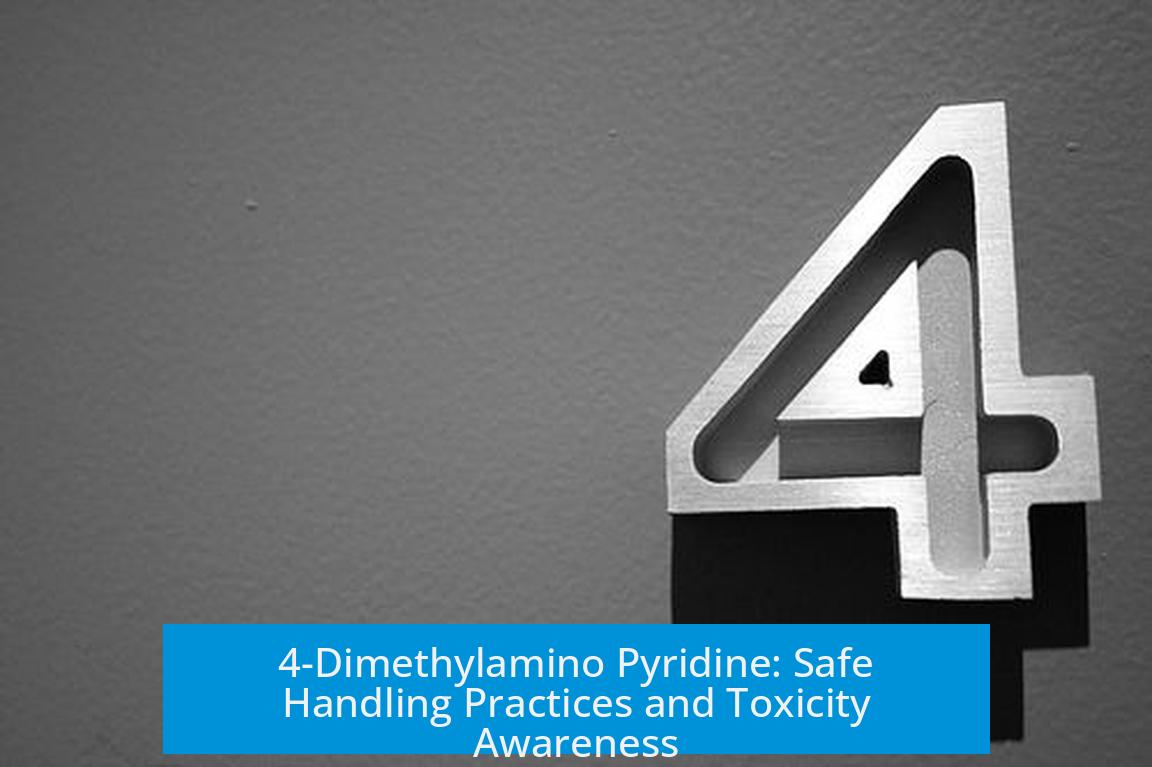Understanding 4-Dimethylamino Pyridine (DMAP) and Safe Handling Practices

4-Dimethylamino pyridine (DMAP) is a highly toxic chemical that readily absorbs through the skin, necessitating strict handling precautions to avoid exposure. This compound typically appears in crystalline or pellet form, minimizing dust generation during use. However, due care is essential due to its hazardous nature and rapid, exothermic reactivity.
Toxicity and Skin Absorption
DMAP poses a significant risk through skin absorption. Direct contact must be avoided as it can quickly penetrate the skin barrier. While some sources suggest it is manageable with proper hygiene, the consensus underscores the need for caution to prevent toxic exposure.
Physical Form and Dust Control
- Generally available as pellets or crystals, not easily dusted
- Powders may generate dust; handling should be done in a fume hood
- Good benchtop ventilation can reduce dust concerns
Personal Protective Equipment (PPE)
Basic PPE
- Full-length lab coat with no gap between gloves and sleeves
- Chemical-resistant gloves (preferably double gloves for extra protection)
- Eye protection such as safety glasses or goggles
- Use of a fume hood for all handling activities
Additional Measures for Larger Quantities or Solutions
- Use resistant gloves like SilverShield when handling solutions, especially in solvents like dichloromethane
- Face shield recommended to prevent facial exposure
- Double gloving reduces risk of glove penetration
Handling Procedures
Proper technique is vital to minimize spills and contamination. Strategies include:
- Using a paper towel beneath weighing vessels to catch spills
- Transferring DMAP carefully to vials and sealing immediately
- Handling transfers in the fume hood
- Disposing of gloves after handling, washing hands rigorously, and donning fresh gloves for further work
Chemical Reactivity and Hazards
DMAP reacts quickly and releases heat. Handling large amounts or concentrated solutions can be hazardous. Its strong odor necessitates working under fume hood conditions. Routine chemical safety protocols apply, with heightened awareness of its reactivity.
Key Takeaways
- DMAP is highly toxic and absorbed through the skin; avoid contact.
- Crystalline form reduces dust risks, but powders demand fume hood use.
- Wear full PPE: lab coat, gloves, eye protection, fume hood.
- Double gloving and face shields recommended for large or solution handling.
- Handle with care to prevent spills, wash hands after use, and dispose of gloves.
- Beware of its rapid, exothermic reactions; keep work under ventilation.
What safety gear should I wear when handling 4-dimethylamino pyridine?
Wear a full-length lab coat, gloves, and eye protection. If working with large amounts or solutions, double glove or use resistant gloves and a face shield. Always work in a fume hood to reduce exposure.
Is 4-dimethylamino pyridine hazardous if it touches the skin?
Yes, it is toxic and can easily absorb through the skin. Avoid any skin contact, and wash your hands thoroughly after handling.
Does 4-dimethylamino pyridine produce dust during handling?
It usually appears as pellets or crystals, which do not dust readily. However, if you have powder form, work in a fume hood and use good ventilation to avoid inhaling dust.
How should 4-dimethylamino pyridine be handled to prevent spills?
Use a paper towel under your bottle and spatula when weighing. Transfer carefully to a capped vial before moving to the reaction vessel. Dispose of gloves and wash hands between tasks.
Are there special precautions due to 4-dimethylamino pyridine’s chemical reactivity?
Yes, it reacts quickly and exothermically. Avoid adding large amounts at once and always perform handling in a fume hood to control fumes and odors.





Leave a Comment